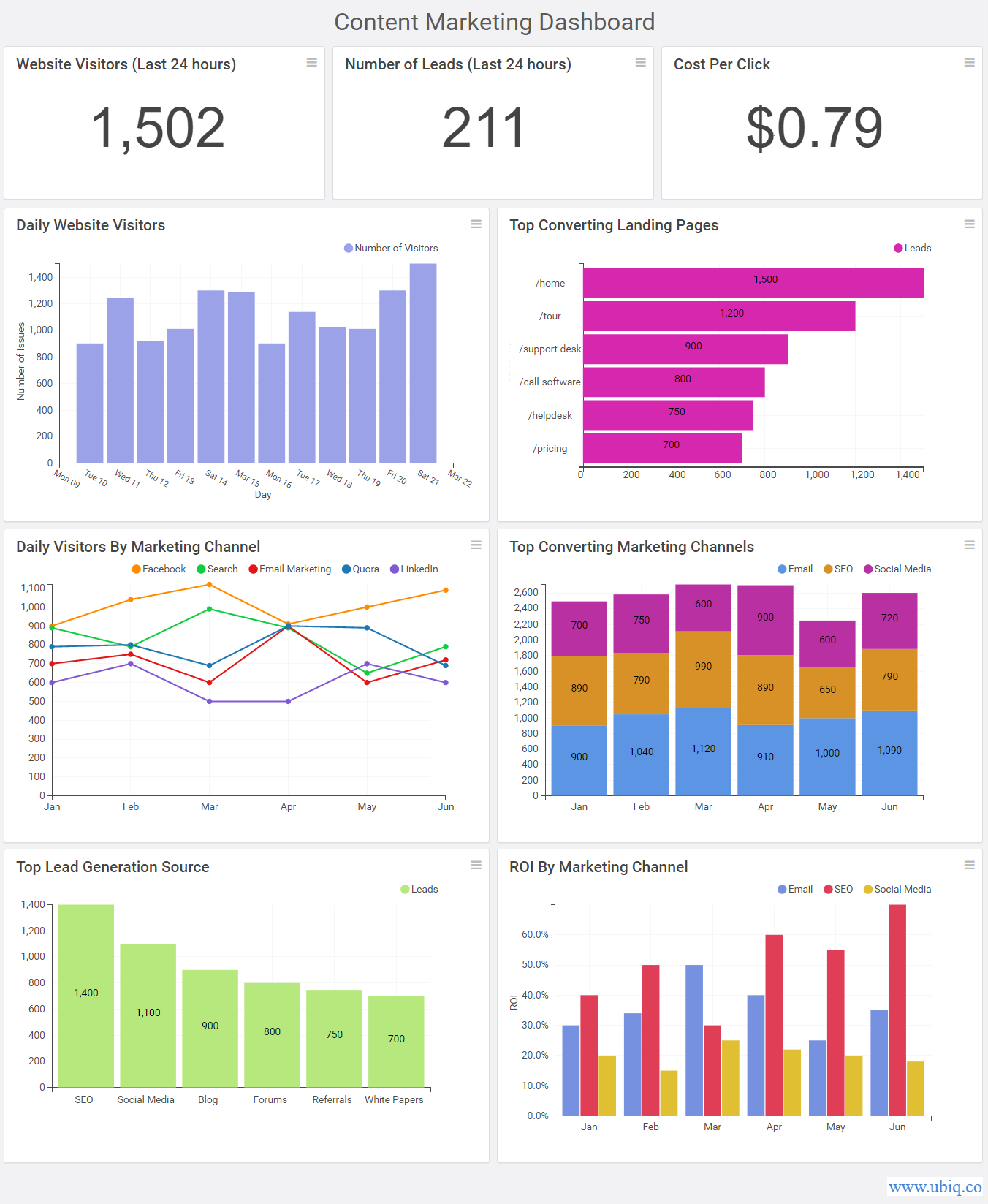Content Marketing dashboard helps you measure performance of your content marketing strategy as well as prove its marketing ROI. Here’s how to create content marketing dashboard for your business and clients.
How to Create Content Marketing Dashboard
Here are the steps to create content marketing dashboard.
1. Identify Business Objectives
It is important to clearly identify who will see your content marketing dashboard (c-suite, marketing managers, your team, clients?)
Once you have identified these objectives, it is important to tie them to your content marketing strategy. For example, if your business objective is to increase leads by 20% and half of it needs to come from content marketing, then your content marketing goal is to increase leads by 10%.
Business objectives change from team to team, even from person to person. So, clearly identify your content marketing dashboard’s target audience and determine their business objectives.
Bonus Read : How to Design a Dashboard for your Business
2. Determine content marketing KPIs & metrics
What should a content marketing dashboard include? The Top KPIs for content marketing dashboard allow users to easily measure performance vis-a-vis goals.
Your content marketing metrics should enable users to determine if they are on route to achieving their goals.
For each business objective, you will need to display at 1-2 content marketing metrics on your dashboard. In the above example, if you want to increase leads, then it is essential to track monthly/weekly leads as well as growth in leads over time.
Only include content marketing metrics that matter. Avoid using vanity metrics, that make you feel good but don’t directly impact business goals & objectives.
Bonus Read : Top Content Marketing KPIs & Metrics
3. Link KPI metrics to ROI
It is essential to show how the above metrics impact ROI. Only then, users will see the value of your content marketing strategy.
In the above example, calculate the average value of lead (total revenue from previous leads/total number of leads). Now, if you plot average lead value over time, it will help users determine the quality of leads your business receives.
Also, calculate average amount of money spent on lead acquisition (content marketing spend previous month/leads acquired previous month), and use it to calculate ROI.
Bonus Read : Key Dashboard Design Principles for Successful Dashboards
4. Gather Your Data
For each business goal, pick their respective metric(s). Determine the calculation formula for each metric, and also the data source for its measurement.
Plot each metric’s present performance vs previous time period (month,quarter,year). Also plot each metric’s target performance goal.
This will tell users how that metric is performing, compared to its past, as well as how it is doing with respect to its target numbers.
It’s a great way to show your audience how their investment is working.
5. Create Content Marketing Dashboard
Design a content marketing dashboard for your team or clients by organizing your content marketing KPIs & metrics logically, into 3-4 layers.
Display the most important KPI metrics at the top, followed by trends & comparison in the middle, and granular details at the bottom.
Place related metrics near each other so that users can easily compare & contrast, and draw insights. For example, place SEO metrics together, and social media KPIs near each other.
After you create content marketing dashboard, make sure you explain your dashboard to its audience. Send them an email or slideshow that gives a gist what to expect from your dashboard. Give a short description about each metric, with its caveats & assumptions. This will make it easy for them to analyze your dashboard.
Here’s an example of a content marketing dashboard created using Ubiq.

Hopefully, the above tips & best practices will help you create content marketing dashboard for your business and clients.
Ubiq makes it easy to visualize data in minutes, and monitor in real-time dashboards. Try it Today!
Sreeram Sreenivasan is the Founder of Ubiq. He has helped many Fortune 500 companies in the areas of BI & software development.